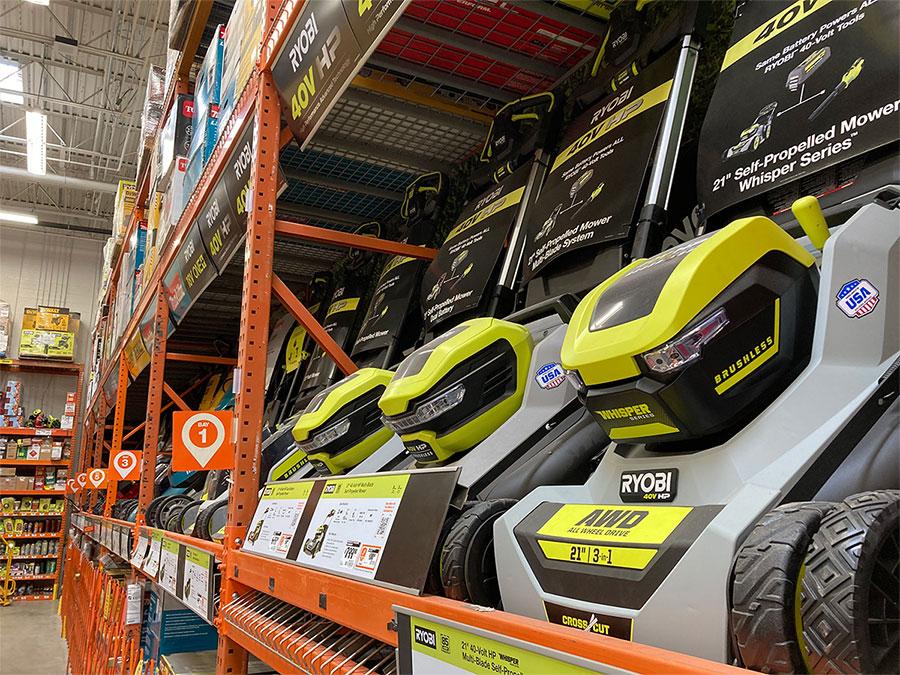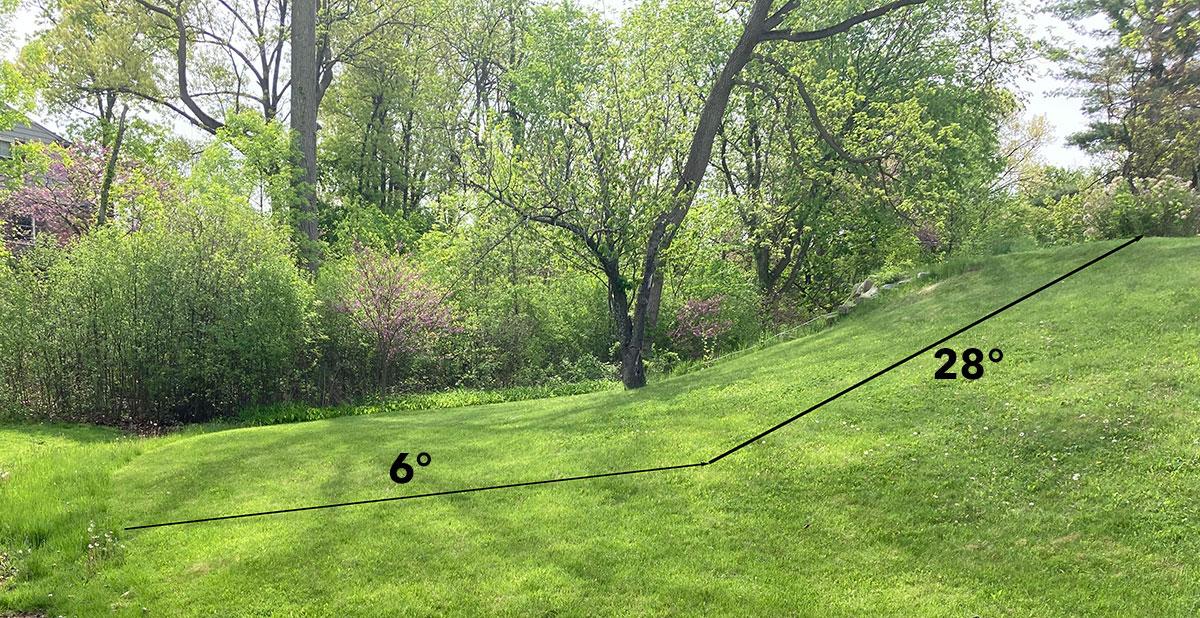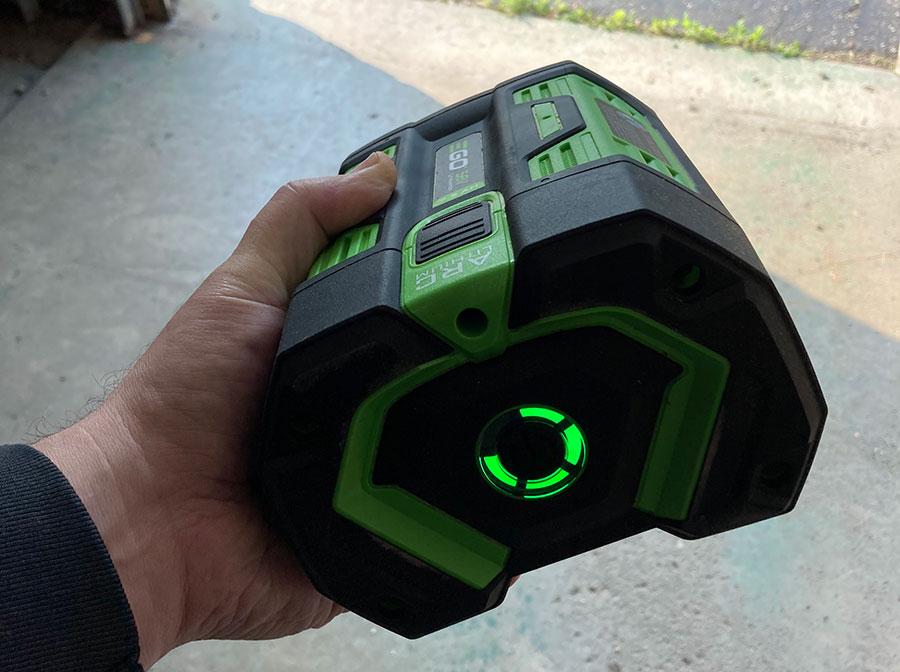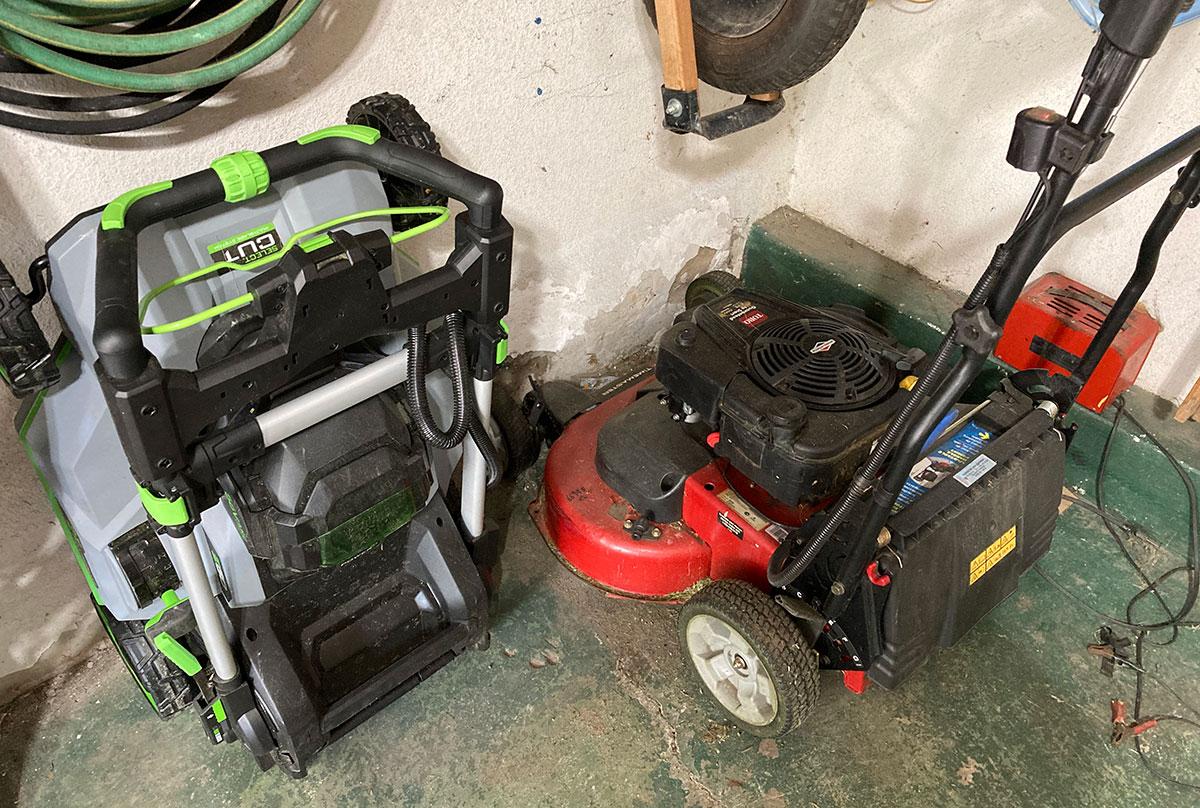Off Topic: It's not just cars which are going electric: My move to a battery-powered push mower
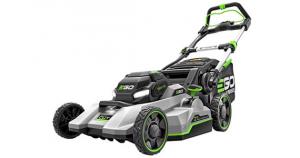
Last year I went pretty off-topic with a lengthy, in-the-weeds post about my experience shopping for, buying and driving an electric vehicle for the first time which received a decent level of attention. In March I wrote a follow-up post giving an update on my experience after a year of owning and driving the car, a 2022 Kia Niro EV for the first year.
The EV revolution is in full swing now, with fully electric vehicle sales growing 63% in the first quarter of 2023 vs. a year earlier; EVs made up 7% of total U.S. auto sales in Q1 of this year, up from 4.6% last year.
However, it's not just automobiles where the impressive electric battery technology advancements of the past few years are having an impact on the retail market--that same technology has also clearly been quietly trickling down smaller vehicles and other devices. Electric bikes are also quickly growing in popularity (I used to think this was just another name for an electric moped, but there are some important differences), for instance.
And then there's outdoor power tools which have traditionally been powered using gasoline such as lawnmowers and snowblowers. Electric push lawnmowers have been around for decades (I remember our neighbor across the street had one when I was a kid in the '80's), but they were typically not very powerful and the only one I ever saw required an extension cord which made it unusable on any but the smallest, simplest lawns. In addition, having a metal blade quickly spinning around near an extension cord for an hour or so is never a good idea.
I don't know how long battery-powered lawn mowers have been available, but again, in the past I never saw more than a couple of models available which were very expensive and pretty underpowered.
Between the amazing advances in EV battery technology over the past decade and the growing number of states and municipalities which are now banning small gasoline engines in things like lawn mowers, leaf blowers and the like, the landscape has changed dramatically over the past few years. There are now over a dozen brands which offer battery electric push mowers, and that includes established, well-known brands like Toro and Milwaukee.
When I visited my local Home Depot a couple of weeks ago to see what they had in stock, out of around 25 different models on display, a good 2/3 of them were battery electric...and even the ones which were still gas powered were wayyyy at the back, well out of the public eye. It's a whole new world in the lawn maintenance field these days.
Before I go on, I should probably explain my own lawn situation. We live on a corner lot in a suburban neighborhood, with a pretty large lawn--nearly a full acre. The front and south side yards are fairly small and flat, but the north and east sides are huge and have steep hills.
How steep? Around half of each side is less than a 10° slope, but the other half is around 28° (and there are a few areas where it's even steeper, perhaps as high as 35° or so). For what it's worth, most push mower manuals specify a maximum incline of no more than 15-20° at most. Unlike a gas-powered mower, there's no danger of flooding the engine or air filter from the gas or oil sloshing around...but there's still the danger that you'll slip and/or the mower will fall on top of you.
(I didn't just eyeball this--I actually used the inclinometer included on my iPhone to confirm the 28° slope in this photo):
Until now, I've been using a gas-powered 30" Toro TimeMaster dual-blade behemoth, which mows much more quickly than a traditional 16" - 21" push mower but which also weighs a whopping 144 lbs...and again, it's gas powered, which means constant risk of flooding/spilling gas & oil.
We've had it for over a decade and it's broken down at least once or twice per summer for the past 7 years, so I finally had enough and decided to follow up my move from gas to electric on my car with a similar switch for our lawnmower.
I did a bunch of research and determined that there are seem to be around a half-dozen brands which consistently show up on "top ten" lists:
- EGO Power+
- RYOBI
- Greenworks
- Toro
- Makita
- Worx
After comparing various specs and reviews, we ended up deciding on the EGO Power+ LM2135SP. Until two weeks ago I had never even heard of this company, but it got rave reviews from a bunch of folks when I posted about it on Twitter, and I watched a number of comparison videos on YouTube which on the whole seemed to give EGO's mowers the edge over the other brands. Plus, Lowe's is currently having a sale on that model ($600 vs. the normal $750), so we went for it.
OK, so here's some of the specs and features:
- It has a multi-blade system, which means there are actually 2 blades on the same spindle. It actually comes with a total of 4 blades...besides the default one, there's one designed specifically for mulching, a "high lift" blade designed for bagging (basically it pulls the grass up higher so more of it goes into the bag), and an "extended run time" blade which supposedly maximizes the battery life.
Note that the Toro has a dual-blade system, which isn't the same thing--it has two smaller single blades side by side to give that 30" cutting width.
- It's self-propelled, which means that you can engage/disengage the rear wheels at the touch of a button to help push it along. Needless to say, this is extremely helpful on hills. The self-propel can be adjusted from around 1 - 3 miles per hour.
- You can easily adjust the height of the blade from 1.5 to 5 inches high (7 positions) via a single lever.
- It only weighs around 56 lbs (though I think that's without the battery, which adds another 8 lbs or so, so call it 64 lbs total).
It's important to note that while the EGO weighs less than half as much as the Toro, that seems to be entirely due to it being a 21" model vs. 30" as opposed to it being electric vs. gas-powered; it looks like even gas-powered 21" models typically don't weigh more than 80 lbs. at most. The Toro isn't just 43% wider, it also has a metal deck (the EGO as well as many other models have moved to a plastic composite material) and a larger engine to control the dual blades, all of which makes it a lot heavier.
- In addition to mulching or bagging, the EGO also has a side discharge as you'd expect...but instead of having a hole and chute sticking out the side (which can be highly annoying, since it can catch on stuff & get yanked off), the side chute actually attaches on the rear where the bag would otherwise go; it's curved to throw the grass to the right side. This is a clever design as it keeps everything within the main mower's footprint.
- It includes a 56 volt 7.5 Ah (420 Watt) lithium battery which is supposed to give up to 60 minutes of runtime for normal grass or up to 30 minutes with very thick/long grass.
- It also includes a 550W charging unit for recharging the battery; it's supposed to take about an hour to recharge.
- You can also buy a 2nd or 3rd battery, of course, and they range from 2 to 12 Ah, or between 112 - 672 Watts.
It's worth noting that the Toro's gas tank is around 0.3 gallons or 38.4 ounces...and it's supposed to run for around 45 minutes before needing to be refilled, which has been my experience. So on that front, the EGO is pretty comparable (assuming you have a 2nd battery that's already charged to swap out).
The batteries are still very expensive--the 7.5 Ah battery costs a $400 at full price, while the 12 Ah version costs a whopping $600...as much as the lawnmower itself with the first 7.5 Ah battery!
However, you can also get compatible aftermarket batteries at a substantial discount--Amazon has a 7.5 Ah replacement battery from a company called "Aoasur" for $270, or 1/3 less, though I have no idea what the quality or lifespan of that is.
I should also note that the batteries are designed to be compatible with their other small power tools (leaf blowers, snowblowers, chainsaws, etc), so you can swap them out from one to the other, although I assume that you're only really supposed to use the 2 - 4 Ah batteries with the hand-held tools (trimmers, leaf blowers, etc) since the higher-capacity batteries are probably too heavy/awkward to use with those.
Here's a picture of the 7.5 Ah battery; I'm holding it to give you a sense of scale. The batteries even have a cool charge status light system--each light represents 20% of the charge, so it's around 80% charged in this photo. The mower is designed with the lights facing the handl so you can see the charge status while mowing.
I haven't bought a 2nd battery yet (I wanted to wait until I had put the mower itself through its paces to make sure I was gonna keep it first), but assuming I get one more decent quality aftermarket battery at the same capacity (7.5 Ah), that should bring the total cost of the mower + 2 batteries + charger to around $950 total with tax.
By comparison, a typical 21" gas-powered self-propelled push mower seems to average between $400 - $700, so it's really that 2nd battery which makes up the price difference between gas and electric. If I forego the 2nd battery, I just have to wait an hour for the original battery to recharge, which means mowing for an hour followed by taking an hour break...and in really hot weather, that's something I'd have to do anyway.
As for the performance itself, the EGO performed as advertised the first time I used it--it ran for 55 minutes each time before the 15% charge warning light started to blink on the battery itself, and it took another ~55 minutes to recharge from ~10% to 100%. This was using the mulching blade (though I actually bagged the grass anyway), with about 2/3 of the lawn having been mowed a week earlier (before the Toro conked out for the last time) and the other 1/3 fairly long.
It handles the steep hillside fine as well--after 12 years of having to maneuver the Toro (which, again, weighs more than twice as much), the EGO was easy to deal with. If anything, I had to be careful not to let the front lift up off the grass when going uphill due to it being so light (and yes, I made sure to mow side to side as much as possible).
Overall, the electric mower doesn't seem quite as powerful as a comparable 21" gas-powered mower (remember, I was comparing it to a 30" beast so it's difficult to judge), but it was still powerful enough for my purposes.
Now, I used the Map Developers website to calculate the size of our lot...it's 0.87 acres total, but of course a lot of that is taken up by the house, driveway, flower beds and patio. As far as I can figure, the lawn itself makes up around 73% of the total lot, or roughly 0.63 acres. Subtract trees, bushes etc. and let's call it an even 0.6 acres. That's roughly 26,000 square feet.
0.3 gallons = 1.14 liters of gas for the Toro, and I've usually been able to mow the entire lawn on a single tank with a bit left over, so let's call it around 1 liter or 34 ounces of gas per full mow.
By comparison, the EGO took about 2 1/2 full battery charges using the 7.5 Ah battery. That's 56 volts x 7.5 Ah or 420 watts x 2.5, or around 1.1 kWh of electricity per full mow.
We pay around $0.18 per kWh to DTE (including tax/fees), so that's around $0.20 of electricity per mow with the EGO vs. 0.27 gallons x $3.50/gallon in Michigan on average = $0.95 per mow with the Toro.
Assume 28 weekly cuts per year (April - October) and that's around $5.60 in electricity per year vs. $27/year in gas, saving $21 per year. Over 10 years that's $210 in savings, give or take (and depending on how electricity & gas prices change over time). There's also the savings on oil as well as maintenance costs like cleaning/replacing the carburetor, fuel filter, spark plugs and the like.
Obviously there's still some variables here, but overall I'd say electric push mowers have pretty much reached price parity with gas push mowers, especially when you take the fuel & maintenance savings into account.
On top of that, there's also these additional benefits:
- No stinky gas smell
- No gas or messy oil spills
- Much quieter (not silent by any means, but far quieter than a gas mower)
- Not risking throwing your back out yanking on a pull cord
- Vertical storage--since there's no worry about gas/oil leaks you can store it on its side
Here's what the EGO looks like when stored against the wall upright with the handle collapsed and folded in. As. you can see, it takes up less than half the floor space of the Toro (admittedly some of this is because the Toro is a 30" model, but still). Most importantly, it only sticks out perhaps 15" or so from the wall at most:
It also comes with a 5 year warranty on the mower and 3 years on the battery and charger.
In general, assuming neither the mower, battery or charger experience any mechanical problems for the next 5+ years, I'd say it's a winner all around. Obviously your mileage may vary depending on your particular lawn situation.



